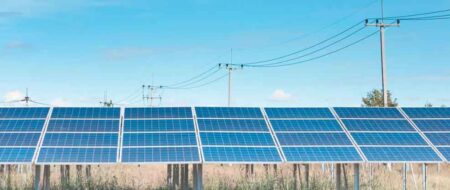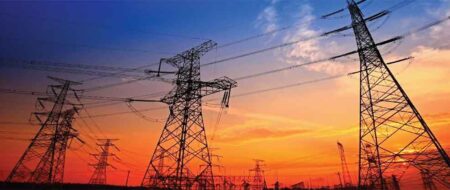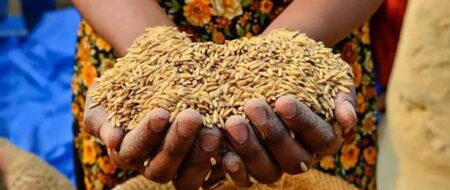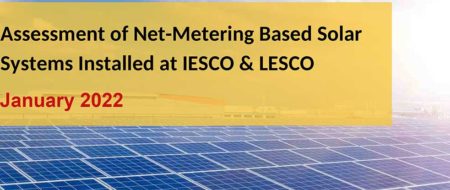Federal Budget 2015-16: A Review
The Institute of Policy Studies (IPS), Islamabad has regularly been coming up with its pre-budget proposals and post-budget analysis and recommendations, in order to assist the parliament, policy makers and all other stakeholders to review the budget. The following analysis has been prepared by a special IPS Task Force.
IPS Report
Considering that the budget is the most important indicator of a government’s priorities – economic, social and beyond that, political – and the document usually gives a clear indication of the direction in which the government is steering the country, its economy and society; the Institute of Policy Studies (IPS), Islamabad has regularly been coming up with its pre-budget proposals and post-budget analysis and recommendations, in order to assist the parliament, policy makers and all other stakeholders to review the budget. The following analysis has been prepared by a special IPS Task Force.
A Brief Look at Economic Indicators
Before analyzing the budget, it is pertinent to have a look at the state of national economy. According to the Pakistan Economic Survey 2014-15, provisional estimates put GDP growth at 4.24 per cent which is slightly higher than the 4.03 per cent of 2013-14 but less than the target set for the outgoing fiscal year, 5.1 per cent. Growth in agriculture sector remained very low, posting 2.9 per cent but more disturbing is the fact that the major crops have faltered. Whatever growth has been recorded is on the basis of growth in livestock sub-sector and to some extent minor crops. Livestock, it may be pointed out, is a gray area as far as calculation of growth figures is concerned and the rate of growth in this sub-sector is mostly imputed. Large Scale Manufacturing was targeted to grow at six per cent but the growth recorded is 2.4 per cent. Services sector grew at five per cent.
A major positive indicator on the economic horizon is reduction in inflation; for which the provisional estimates come at 4.8 per cent as against the target of eight per cent for 2014-15. Yet, this indicator is neither a result of any state policy or effort (being due mainly to drastic decline in global oil and commodity prices) nor can the figures be regarded as accurate altogether, as the public perception is contrary to it (owing to continuous rise witnessed in the prices of food and daily use items, being experienced by the common man and reported by media.)
While official economic data has always faced a question of credibility, the contradictory positions of two major government departments on the whole issue of unemployment is putting reliability of the claims of ‘stabilization’ at stake. Planning Commission’s data says that over eight per cent of the workforce is unemployed while the finance ministry and budget documents say six per cent, claiming that unemployment has gone down from 6.3 per cent to six per cent. The decline in prevailing scenario becomes un-understandable for the economists; looking at the GDP growth rate of 4.2 per cent and population growth rate of 2.2 per cent. Textile industry – a major employer – claims that 30 per cent of its production units have closed down creating unemployment to the extent of some two million persons. In this scenario, the Planning Commission and National Accounts Committee (NAC) seem to be painting closer-to-the-true picture, as unemployment cannot be expected to go down in these circumstances.
The overall burden of debt continues to rise. It may be stressed here that the idea of reduction in the public debt as a percentage of GDP is fallacious. Although there is an apparent decline from 64.4 per cent to 62.9 per cent; but in real terms over Rs.1000 billion have been added to the debt burden in this year alone. The burden of debt has increased by around three trillion rupees since this government took over two years ago. Tax revenues have improved by 13 per cent, but have not recorded any improvement as a percentage of GDP. Thirteen percent loses its glamour when it is adjusted in respect of 4.2 per cent growth rate and 4.6 per cent inflation. More disturbing is the fact that the current expenditure has gone up as percentage of GDP while development expenditure has gone down.
The current account is continuously being sustained by robust growth in remittances, which have increased by 16 per cent during the first 10 months of 2014-15 and are expected to reach to the tune of 18 billion dollars by the year end, which is a blessing for the external account though have little to do with any effort on the economic management side. Fiscal deficit and bank borrowing targets were also missed, with visibly large margins.
Budget 2015-16 at a Glance
The total outlay of the budget 2015-16 is Rs.4451.3 billion rupees, of which internal resources are estimated at Rs.3366.8 billion, external resources at Rs.751.5 billion and privatization proceeds at 50.0 billion rupees. As usual, 83 per cent of the expenditure (Rs.3482.2 bn) is to be consumed by the current expenditure while only 17 per cent (Rs.700.0) is estimated to be left for the developmental expenditure. (Please see the figure I and II below.)

The Strategy: Finance minister has claimed in his budget speech that the budget 2015-16 is a movement towards a growth oriented paradigm, from presently [what he describes as] a stabilization paradigm. He has highlighted that the budget strategy of the government revolves around the following elements:
- Decreasing fiscal deficit
- Increase tax revenues
- Continued focus on energy
- Enhancing exports
- Increasing Tax to GDP Ratio
- Public Debt Management
- Benazir Income Support Program
Analyzing the Budgetary Proposal and Measures
There may be a number of yardsticks to analyze budgetary proposals and measures. This review, however, analyses the budget 015-16 from two angles. One: is there any new approach, departure from the past exercises and journey towards a new direction for rejuvenation of economic activity, growth and development? Two: are the budgetary measures and proposals in line with the announced strategy and priorities and whether the targets set for the budget year are expected to be met?
At the outset, looking at the broader picture of resources and expenditures, it becomes clear that there is no visible improvement in the structure and parameters of the budget, which could suggest any extraordinary efforts or any drastic steps on part of the government machinery to look towards any new beginning. Figures for both the resources and expenditure have marginally been revised upward, and as usual, an attempt to merely balance the two figures is visible from the documents.
While the overall approach looks “business-as-usual”, in the following paragraphs, a sector-wise review of some of the sectors vis-à-vis budget 2015-16 is being given.
Energy: Considering the multidimensional energy sector crisis that the country is faced with, it is pertinent to look at budget document’s attempts to tackle the sector’s woes. In his budget speech, the Finance Minister suggested that the following strategy for energy sector was adopted in the preparation of the budget:
- Energy sector taken up as one of the key priorities of government
- To bring 7000 MW on stream besides setting up 3600 MW LNG-based projects to fill current demand-supply gap
- Bring 10600 MW in the system by Dec 2017
- Dasu, Diamer-Basha, Karachi Civil Nuclear Energy etc. to be completed beyond 2017
The total budgetary outlay for the energy sector comes to the tune of Rs.248 billion, which is sizable. The focus on hydro projects and improvement of the transmission lines are welcome initiatives. However, a clear strategy to deal with the once again burgeoning Circular Debt – which is key challenge in overall energy crisis – is totally missing from the budget. Reduction in the subsidy for the power tariff differentials – from Rs.221 billion in 2014-15 to Rs.118 billion is sure to hurt the consumers. Even in the case of transmission lines, the allocation of Rs.2.3 billion for CASA-1000 makes little sense. There are also apprehensions as to how much this allocation is relevant; as the project is yet to get underway.
Moreover, in case of energy, the budget deals, by and large, with the power sector only; and there are neither any developmental allocations for oil and gas sector, nor any incentives to attract local and foreign investors. Importantly, there is absolutely no indication and that the government intends to move ahead with the projects such as Iran-Pakistan gas pipeline during the coming fiscal year, as no funds have been provided for it at all.
Agriculture: While the sector remains the backbone of national economy, with around 21 per cent share in GDP and providing employment to around 44per cent of the workforce, it has failed to draw the required government attention in the budget 2015-16. Setting the target of agri-credit at Rs.600 billion is of symbolic value, as it is a well-established fact that much of this credit goes to a limited number of large landowners. Incentives such as interest free loans for solar powered tube-wells are welcome, but not enough. There are no measures leading to any meaningful decrease in the cost of agri inputs (seeds, fertilizers , pesticides). The development budget for water, an important agri need, has been decreased from the ongoing year’s Rs.46 billion to just over Rs.30 billion, for 2015-16.
Industry & Exports: As usual, a major set of incentives goes to the textile, industry – with a package calculated at Rs.64.5 billion. True that textiles are single largest export industry of the country, yet it is also a fact that our textile exports remain half of those of Bangladesh despite all the incentives of yester years. The budget by and large has paid only lip-service to the much-needed incentives for other export-oriented industries particularly the non-traditional exports.
Development Budget (PSDP): The size of federal Public Sector Development Program (PSDP) has been increased to Rs.700 billion. This increase is welcome. But a careful analysis reveals that increase could be meaningless, as the allocations are neither true depictive of the country’s development priorities nor are directed entirely on developmental projects. For instance, Rs.100 billion have been allocated for temporarily dislocated persons, which can hardly be termed as a developmental expenditure, primarily being a rehabilitation exercise.
Around three fourth of the development budget is targeted towards infrastructure (communications and energy included) – the allocations going up from 323 bn. to 394 bn. – while the share of and allocations for all-important social sectors have gone down. The allocation for education has gone down from Rs.28 billion to Rs.22 billion while that for health has witnessed a decline from Rs.28 billion to Rs.20 billion in the federal PSDP 2015-16.
There are some other questionable allocations in the federal PSDP as well. Rs.28.5 billion have been set aside in the name of Special Federal Development Program; with no details as to where it will go. To recall, Rs.36 billion were provided for this in the budget 2014-15 but revised estimates indicate that only up Rs.10 billion are expected to be spent under it by the end of ongoing fiscal. The details of these special programs should be made known and it has to be seen whether these sizable amounts are not meant for providing the economic managers with a cushion to adjust the PSDP figures, and where expenditure is made, the decision is not dictated by political considerations as against the real needs of the people under these special programs. Another allocation of Rs.20 billion is being made for Millennium Development Goals (MDGs) and Community Development Program (CDP). An important question that arises in this regard is that with only six months left in the MDGs deadline (December 31, 2015) what improvements is the country foreseeing with these eleventh-hour increases as MDGs were the targets set over a whole decade.
Taxation: The same old policy of sticking with indirect taxes has been continued for the year 2015-16. In fact, the taxes to be collected by FBR during 2015-16, as projected in the budget documents indicate that increase foreseen in direct taxes is Rs.238.8 billion while that in indirect taxes is Rs.259.8 billion, the latter being considerably more than the former. It is indicative of the approach that the government is no mood to tax the wealthy and untaxed segments proportionately and resultantly, the share of indirect taxes will continue to rise. The statements of important government functionaries of the recent past and some of the government’s own surveys highlight that approximately three to four million people who must be paying taxes remain outside the ambit of direct taxes (such as income and wealth tax). Finance minister has announced another cut in discriminatory, rather exploitative, SROs to be issued by FBR, which is welcome. But the need to do away with SROs once and for all is all too evident. Among the various anomalies in taxation, for example, is that while duties on import of printed books from abroad are marginal; those on imported paper are high. Such anomalies need to be dealt away with.
Wither Relief? Pakistan is a country where a large segment of population requires specifically targeted relief, assistance, and social security provisions. While on one hand the social sectors have been neglected and bare minimum allocations have been worked out for education and health; the social safety priorities have been kept anchored in the much talked about Benazir Income Support Program (BISP). Allocation for BISP has been increased to Rs.102 billion (from Rs.97 billion in the ongoing fiscal) and it is estimated that the number of beneficiaries of the program will be increased from 4.3 to 5.0 million. Sticking with this program despite serious concerns repeatedly expressed about the usefulness of this program and reports about rampant corruption and political use remains a big question. It has been observed throughout the country that meagre monthly payments add to the dependence syndrome and fail to make people economically active and self-reliant. The whole approach needs to be rethought to bring the poor within the production stream.
The purpose of such schemes should be to make the beneficiaries self-reliant; BISP has not served this purpose. There is an urgent need to analyze the impact of these huge amounts being spent continuously, every year, and look for ways to make them more effective and targeted. In terms of relief, the increase in the salaries (and pensions) of government employees by 7.5 per cent makes a mockery of itself in the wake of inflation, though decreasing overall but being high in case of food and daily use items. Increase in minimum income from Rs.12000 to Rs.13000 is not only too little, but as usual, an effective mechanism to implement/ enforce whatever increase has been announced, is also missing. It may also be highlighted here that the cut in power sector subsidies and increase in the rate of duty on products such as packed dairy products and beverages will have an inflationary impact that may actually render this meagre ‘relief’ as meaningless.
Continuous Dependence on Debt: While the burden of debt servicing (Rs.1.2 trillion for 2015-16) has already become unsustainable for an economy such as Pakistan; budget 2015-16 continues to tread the same brow-beaten path, targeting Rs.751 billion from external sources and expecting domestic bank borrowings of Rs.282.9 billion (which is likely to end much higher considering the continuing track record of yester years). It simply means we may be heading towards another trillion rupees plus burden, added to the already mammoth total of public debt, and resultantly, a much higher requirement for expenditure on servicing, in years ahead.
Budget Formulation: Some Important Points
It has been highlighted time and again that the process of budget formulation in the country is not a truly participatory exercise. There seems to be some movement towards making it participatory from this year, but the effort remains, by and large, a case of too little and too late. One positive point is that there was a dialogue with the business community in formulation of the budget. There were also a couple of meetings with the finance committees of the parliament. But nothing really substantive has come out. The reaction of the business community indicates that a large chunk of their proposals (up to 80 per cent) has not been considered. Another important aspect to keep in view in this regard is that it becomes a joke that Pakistan Economic Survey is released just 24 hours before the budget. The Senate itself has recommended several times that the document should be released one to two weeks before the budget so that people study and digest it and in the light of that, evaluate the budget.
Second important point with regard to budget is this whole concept of supplementary grants, which is against the concept of “no taxation without legislation”. Even in this budget the supplementary grants come to over Rs.200 billion, of which about 140 billion are new expenditures all incurred with impunity, without parliamentary sanction. Unfortunately, the amount is double of what was overspent last year and thus represents a major lapse.
Third relates to SROs, which are an open anomaly and 90 percent of these are misused to oblige and give concessions to specific persons and groups. SROs have been a source of built-in corruption in the system. The Senate has been recommending that SROs must be brought to a complete end. One can appreciate that there can be some developments such as calamities, unforeseen events, which might call for fresh financial allocations. For that, the government can have two mechanisms: 1) fresh budgetary requests (the country sees many mini budgets in the form of price hikes every month), and 2) if fresh requests’ approval becomes difficult, constitution may be amended to authorize parliamentary committees on finance (both of the National Assembly and the Senate) to consider such requests and sanction them; reporting to the parliament.
Conclusion
In the light of the above analysis, it becomes clear that budget 2015-16 remains a continuation of the same tradition as the nation has been witnessing in the past. The budgetary proposals and measures are not innovative enough. They remain devoid of any vision for enhanced and inclusive growth. The also fall short of an appropriate response to the challenges confronting the national economy. The document at best remains a continuation of the accounting approach. More importantly, it is also not very much in keeping with the manifesto of PML-N which was a very good effort. It had some key ideas which if this government had cared to pursue during these two years, policies could have made a real difference. Unfortunately, that has not taken place.
Any movement from debt dependence to a planned, gradual self-reliance, is not visible in the budget. Even if 5per cent rate of growth is achieved; with 2.2per cent increase in population, there is no possibility of the creation of 2.5 million new jobs, as the finance minister has boastfully targeted in his budget speech. That we can move from a stabilization paradigm to growth paradigm with this kind of a budgetary approach, is a wishful thinking, particularly in the absence of any clear policy shift. A few incentives in agriculture and energy, which are totally in-sufficient to lead towards a paradigm shift.
Related News:
IPS advises govt to adopt growth oriented approach
The present budget is devoid of any vision for economic growth
Budget 2015-16: Setting the Priorities












